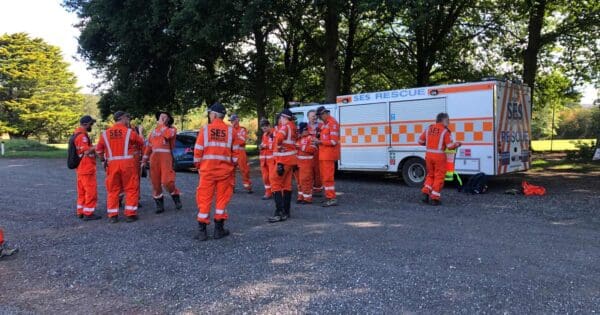A Personal Locator Beacon (PLB) is a valuable tool for those who enjoy outdoor activities such as hiking, camping, and boating. A PLB can be a lifesaver in emergency situations, as it allows search and rescue teams to quickly locate and assist individuals in distress. However, it is essential to test your PLB regularly to ensure it is functioning correctly when you need it the most. In this blog post, I’ll cover how to test a personal locator beacon to ensure it is working correctly.
A PLB should only be activated when a person is in distress that is in grave and imminent danger and requiring immediate assistance. In between the manufacturers’ recommended maintenance and battery replacement cycles, the beacon can be tested by the owner using the self-test capability to ensure the continued functionality of the beacon.
There is normally no need for the beacon to be tested in an operational mode by a beacon owner.
Check the battery life
The first step in testing your PLB is to check the battery life. Most PLBs have a battery life of around five to seven years, but it is crucial to check the manufacturer’s recommendations. If your PLB has a replaceable battery, ensure that the battery is not expired, and it is fully charged.
Conduct a self-test
Routine testing of your PLB is recommended to ensure it is in good working order if needed, but please follow the guidance notes by the manufacturer on the frequency that tests should be carried out. Remember that each test will reduce the battery capacity slightly and reduce the operation time of your PLB during an emergency.
Most PLBs have a built-in self-test function that allows you to check the device’s functionality. Conduct a self-test by following the manufacturer’s instructions, which usually involves pressing a specific button or combination of buttons. The self-test should verify that the device’s GPS, transmitter, and battery are functioning correctly.
The self-test function performs an internal check and indicates that RF power is being emitted at 406 MHz and at 121.5 MHz, if applicable. The beacon will provide an indication of the success or failure of a GNSS self-test. The self-test mode signal is not processed by the satellite equipment.
Because the test transmits a short burst on the aircraft distress frequency of 121.5MHz, only carry out this test in the first five minutes of each hour. The Australian-New Zealand 406 MHz EPIRB and PLB beacon standard requires that the 121.5/243 MHz transmission during the self-test is restricted to just one second. Most manufacturers recommend testing your PLB once a month.
There should not be any reason recreational hikers need to test their PLB in operational mode.
Avoid operational testing
The self-test function should accommodate most beacon testing. However, there are some occasions when operational testing may be required. These include:
- Prototype beacon testing
- New beacon models testing
- Search and rescue training exercises; and
- Cospas-Sarsat ground segment equipment performance.
These occasions should be limited to the absolute minimum as they impact the Cospas-Sarsat system. Any test of a 406 MHz distress beacon in the operational mode requires prior approval from RCC Australia.
An operational test involves testing your PLB’s signal by transmitting it to the relevant authority. Beacons activated in the operational or live mode (not using the self-test function) impacts the Cospas-Sarsat space and ground segments and Rescue Coordination Centres (RCCs) worldwide and may inhibit the processing of genuine distress beacon alerts, therefore delaying a response to a distress situation.
Regardless of the beacon’s location or the duration of the activation, a 406 MHz beacon will be detected by at least one Geostationary Local User Terminal (GEOLUT) and it might also be detected by every Low Earth Orbit Local User Terminal (LEOLUT) in the Cospas-Sarsat system.
Furthermore, the 121.5 MHz homing signal transmitted during the 406 MHz beacon activation will be heard by overflying aircraft which may impact genuine distress alerts, RCCs and may impact air traffic services at airports.
Given the reasons above there is a need to ensure that beacon testing is undertaken responsibly. Comprehensive coordination will need to be undertaken to ensure that all Cospas-Sarsat Mission Control Centres (MCCs) around the world are informed of any operational beacon testing as well as the local RCC.
Ensure your PLB registration and contact info is current
Once you’ve purchased your beacon, you must register it with the Australian Maritime Safety Authority (AMSA). Registration is free and in some cases it is mandatory by law.
A registered beacon allows AMSA Search and Rescue to phone your emergency contacts and look up important information to initiate a response as soon as possible. An unregistered beacon can cause a delay in the response.
Once an Emergency Position Indicating Radio Beacon (EPIRB), Personal Locator Beacon (PLB) or Emergency Locator Transmitter (ELT) is registered a confirmation will be issued via SMS, email or letter so that you can prove registration when inspected by authorities. Beacon registration is valid for two years and renewal can be done online on the beacon registration system or by contacting 1800 406 406.
Whenever your contact details or beacon details change, please update them online. Don’t wait for your registration to expire before doing this because incorrect contact details can also delay the response.
In summary
Testing your personal locator beacon is an essential step in ensuring your safety during outdoor activities. By testing your PLB regularly, you can ensure that your device is working correctly and can be relied on in emergency situations. Remember, your PLB is only as reliable as the tests you conduct, so be sure to test it regularly to ensure it is functioning correctly.





